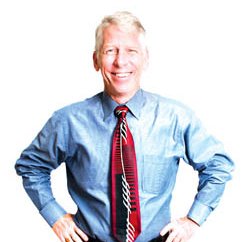
We have some big problems in our region: a lack of affordable housing, a growing number of homeless people, an inadequate transportation system, a tottering healthcare system and a need to create tens of thousands of better-paying jobs. We need to figure out solutions.
Seeing how other American cities are dealing with these problems is one way to gain perspective and find good ideas to implement here in the capital city. And that is why 150 Sacramento business leaders, government officials, heads of nonprofits and myself packed up our business and Texas-casual clothes to head off for four days of the Sacramento Metro Chamber of Commerce’s 19th annual study mission in Austin.
Austin was an interesting city to study. We have 2.4 million people in our region; they have 2.1 million. Both are capital cities in large states, although a much higher percent of Sacramento’s workforce is in the government sector: Twelve percent of our jobs are government, compared to five percent in Austin. They have more jobs in the education and information technology sectors, and we have more agricultural jobs.
Both cities are growing. The Urban Institute predicts that the Sacramento region will grow a respectable 25 percent between 2010 and 2030, but they predict that the Austin region will grow an incredible 44 percent. Austin is expected to continue to be the fastest growing metro area in America. Much of the growth is tied to the expansion of the tech industry in business-friendly Texas, but locals also attribute it to Austin’s “weirdness.”
Austin is a cool city. It’s a thriving music hub, hosting hundreds of live music performances every night in bars, at the airport, in grocery stories and even at city council meetings. Austin hosts the world famous South by Southwest, founded by the owners of the alt-weekly Austin Chronicle.
Austin’s cultural coolness did not come overnight. For decades, Austin was the place that attracted a fun, creative and offbeat crowd who came for the cold beer and cheap pot and stayed for the low rents. We were told that Austin was once a place where 20-somethings came to hang out. But no longer. Now many come to work at technology startups.
Many businesses, especially tech businesses, need creative people who love a unique city like Austin, and we can learn from that city’s success. From a dollars-and-cents business perspective, it is imperative to support and encourage local culture and the local music scene, since this will make Sacramento a more attractive region for cutting-edge business development.
For Austin, it’s an ongoing concern: “How do we keep Austin weird?” This is a particularly difficult problem given that the area’s growth, just like ours, has significantly driven up housing costs and created housing shortages. Many of the region’s celebrated musicians are struggling to make ends meet and are losing their housing to those higher-paid tech workers who want to live in a town with a vibrant music scene.
One of the major differences between Austin and Sacramento is that Austin is politically a “blueberry in tomato soup” while we are a blueberry in blueberry pie. Unlike Austin, Sacramentans can work with our state government.
We, like Austin, face difficult problems. The smartest way to solve problems is to learn from others. Which 150 people did for four days in Austin, thanks to the Sacramento Chamber.
